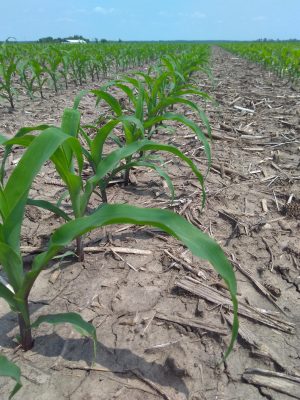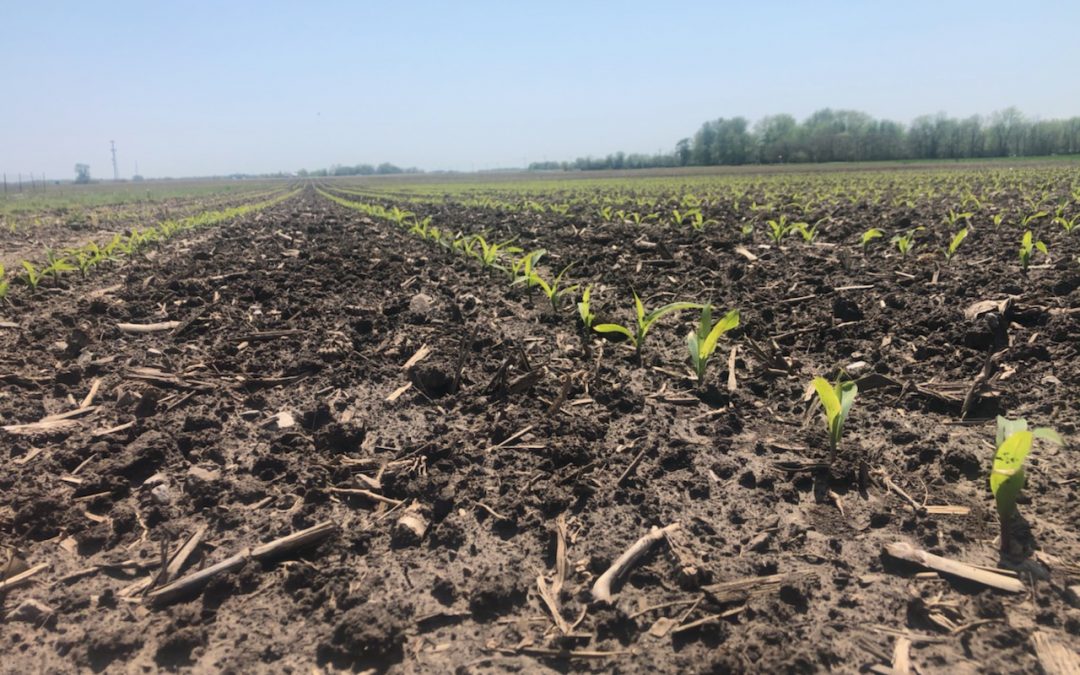Farmers capitalized on ideal planting conditions early this spring, and as a result many corn and soybean fields have emerged or are close to emerging. Forecasted overnight lows over the next few days may be a concern in some fields. Here are some points to remember concerning early season cold damage:
Corn
• Growing point is below soil surface until stage V5 (5 visible collars, 7 visible leaves)
• Temps need to be below 28°F for several hours for meaningful damage to occur
• New growth from the whorl will be visible in 3-5 days after the freeze; dead plants will still look dead at this point.
Soybeans
• Growing point is above soil surface at emergence. The neck or crook of the hypocotyl can freeze and kill the plant even if the growing point and cotyledons are below the soil surface.
• Soybeans can handle temperatures as low as 28°F.
• Observe hypocotyls after a freeze event, if they are water-soaked or discolored then the plant is dead; if they are green, the plant will likely survive even if the unifoliate leaves look dead.
The following conditions can elevate risk of frost/freeze injury:
• Heavy residue can insulate the plant from the warmer soil.
• Cold temperatures move quicker through loose, dry and/or sandy soils
• Low lying areas are more at risk
Reach out to your Agronomist if you need help determining the extent of freeze injury and/or if a replant decision needs made. The following links offer more insight on cold injury:
https://nutechseed.com/wpcontent/uploads/2019/07/Corn_Growing-Conditions_Early-Season-Cold-Stress_NuTech.pdf
https://nutechseed.com/wpcontent/uploads/2019/07/Corn_Growing-Conditions_Early-Frost-Damage_NuTech.pdf
https://extension.umn.edu/growing-soybean/spring-frost#growthstage-541111

The growing point of the corn in the photo above is still below the soil surface, and it would take several hours in the mid to low 20s to kill it. Photo by Chris Adams May 23, 2018.

